Incontinence Advice
Obesity and incontinence: Can abdominal fat cause bladder problems?
Carrying extra weight doesn’t just affect how you feel—it can also affect how your body functions. If you're overweight and noticing bladder leaks, you’re not alone.
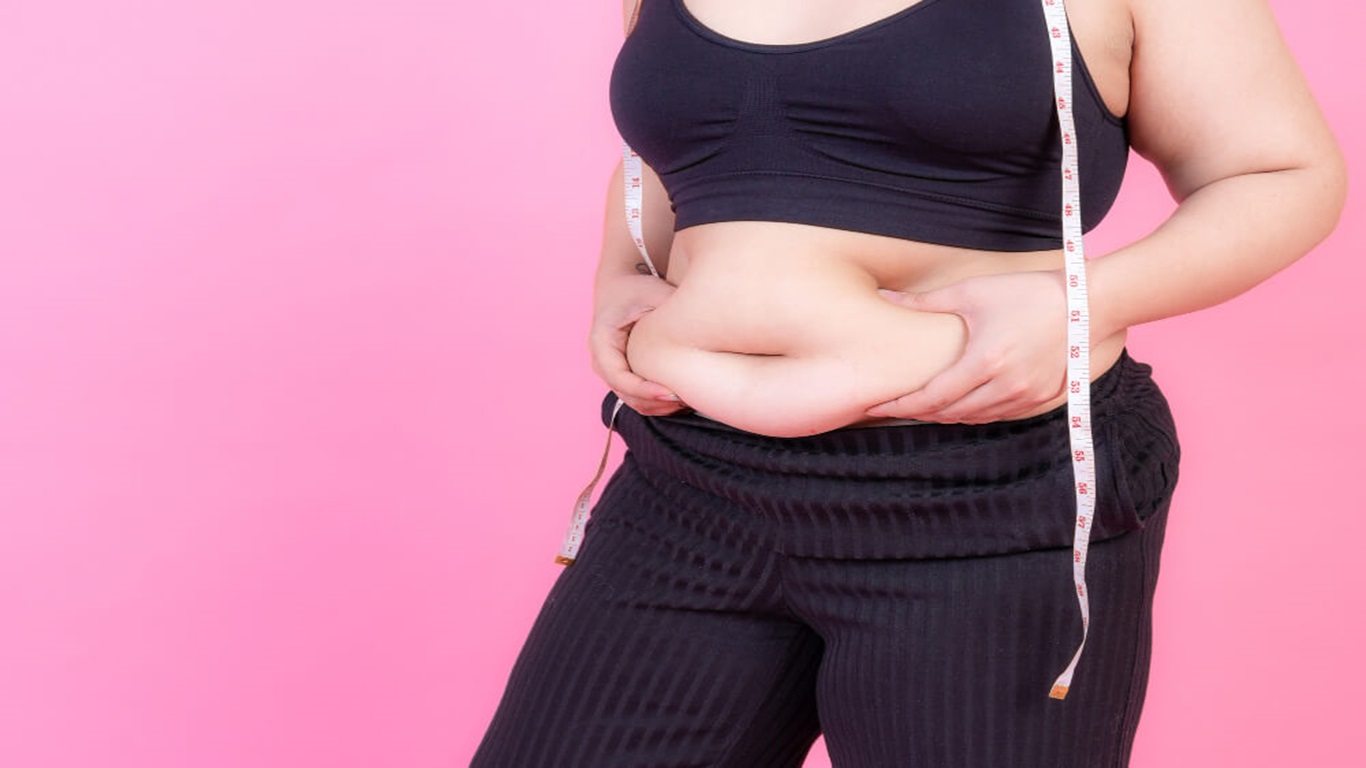
There is a well-established link between obesity and incontinence. Increased body weight – particularly around the abdomen – can increase pressure on the bladder and pelvic floor muscles, leading to leakage. In this article, we will explore how being overweight can lead to bladder problems, the connection between obesity and diabetes, strategies for symptom management and the best bariatric incontinence pants for larger body sizes.
Key points:
- A high Body Mass Index (BMI) increases your risk of urinary incontinence.
Abdominal fat puts pressure on the bladder and weakens pelvic support.
Obesity can be a cause of type 2 diabetes – and both conditions can lead to incontinence.
Even a small amount of weight loss can ease bladder issues.
Choosing the right size incontinence products can make a big difference.
Obesity and incontinence: What is the link?
Being overweight can lead to more than just back pain or breathlessness – it can also affect how your bladder works. If you’ve been asking yourself, “Can obesity cause incontinence?” – the answer is yes. But how?
Excess body weight – particularly around the abdomen – can directly impact bladder function. Abdominal fat increases intra-abdominal pressure, pushing the bladder and pelvic floor muscles down. Over time, this pressure weakens muscle support and impairs bladder control, making leaks more likely during everyday activities like coughing, sneezing or bending.
This type of leakage is known as stress incontinence, one of the most common types linked to obesity. Other forms, such as mixed incontinence (a combination of stress and urge symptoms), also occur more frequently in individuals with a higher BMI.Can being overweight cause incontinence?
Yes. Obesity increases the risk of other conditions that can affect bladder health, such as:
Type 2 diabetes
Kidney disease
Insulin resistance
These conditions can disrupt normal bladder function. For example, diabetes can cause nerve damage that impacts your ability to feel when your bladder is full and leads to an increased thirst – leading to an increased fluid intake and more frequent trips to the toilet. As many people with type 2 diabetes are also overweight, the combined effects can impact the bladder.
Here’s how diabetes contributes to bladder problems:
High blood sugar increases thirst and fluid intake.
More fluid results in more frequent urination, sometimes urgently.
Over time, diabetes can damage the nerves that control bladder function.
Gestational diabetes during pregnancy can also increase the risk of incontinence due to a larger baby size and added pressure on the bladder.
Learn about the connection between diabetes and incontinence.
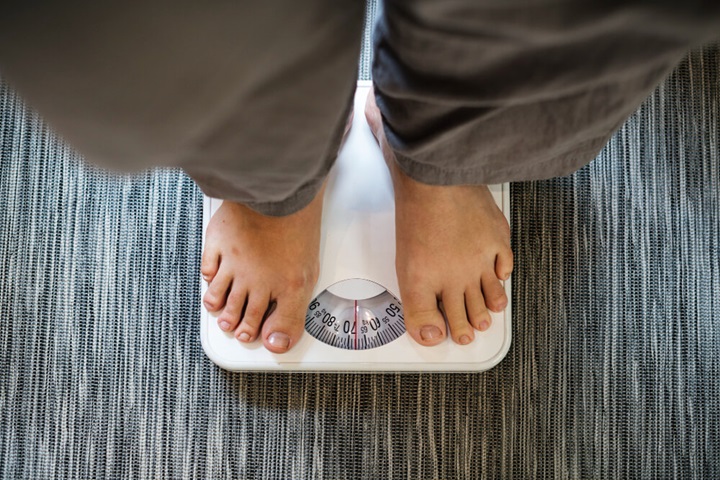
Urethral movement and muscle weakness
Alongside pressure, obesity can cause urethral hypermobility. This condition is where the urethra shifts from, moving out of its usual position due to weakened pelvic floor support. This shift makes it more likely for urine to leak during physical movements, such as laughing, coughing or lifting.
Excess body fat can also affect how the bladder muscles behave. In some cases, it causes the detrusor muscles in the bladder wall to contract unexpectedly. This leads to urge urinary incontinence (UUI), where you feel a sudden, strong urge to urinate – —sometimes without much warning.
Keeping track of your symptoms
If you’re unsure about what is causing your bladder symptoms, it can be useful to keep a symptom journal. Consider noting down:
How often you go to the toilet (read our article on how many times a day you should wee for more information)
When leaks occur (day or night)
What activity you were doing just before the leak
What you had to drink beforehand
Any medications or diet changes
Over time, this kind of tracking can build a picture of the symptoms, enabling you or a healthcare professional to identify patterns and determine the underlying cause. With the right treatment plan – whether that’s weight loss, lifestyle changes or product support – you can take control of your bladder again.
Can losing weight help?
Yes. Weight loss has been shown to make a noticeable difference. Even small changes in diet and activity can ease pressure on the bladder and improve control. Even small weight changes can help reduce pressure on your bladder. You don’t need a gym membership – a short walk, light stretching, or everyday movements all count. If you’re just starting out, go at your own pace.
Consider adding Kegel exercises for men or Kegel exercises for women into your daily routine. These targeted exercises strengthen the pelvic floor muscles that support the bladder, helping to improve bladder control and reduce leakage.
Consider your diet and fluid intake
If you’re managing both diabetes and incontinence, what you eat and drink matters. Certain foods and drinks can irritate the bladder or raise blood sugar levels too high, such as:
Caffeine
Fizzy drinks
Citrus
Alcohol
Foods high in sugar or spices
Drink enough water throughout the day to stay well hydrated, but try to reduce your fluid intake close to bedtime to limit night-time urination.
Bladder training
Bladder training is a behavioural technique that can improve bladder control by going to the toilet on a set schedule then gradually increasing the time between toilet visits. The aim is to strengthen the bladder muscles, improving the ability of the bladder to hold larger volumes of urine for longer periods. Tracking your habits in a bladder diary can help spot patterns and monitor progress.
Distraction strategies to reduce the sense of urgency can be used in between visits, such as:
Taking deep breaths or sitting still.
Distracting yourself with a different task.
Doing short, rapid pelvic floor squeezes when the urge hits.
By taking these steps, you can reduce symptoms, regain control and feel more comfortable.
Lifestyle changes that help
Managing obesity and incontinence doesn’t mean turning your life upside down. These small changes can make a big difference:
Drink water during the day, but reduce fluids before bed, and embrace bladder-friendly drinks where possible.
Cut down on caffeine, fizzy drinks, alcohol and other foods and drinks that irritate the bladder.
Get moving – walking is enough to start
Focus on gradual, healthy weight loss
Remember, even a small reduction in body weight can ease pressure on the bladder and reduce leaks.
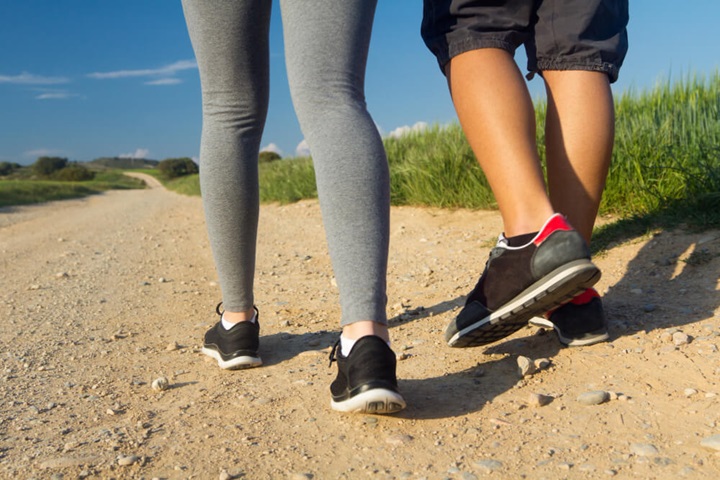
Why the right products matter
If you're living with both obesity and incontinence, it’s important to choose the right products. High absorbency incontinence pads for adults are designed to fit larger waist sizes and offer secure, discreet protection. They help reduce discomfort and allow you to go about your day with more confidence. And remember: protection doesn’t have to be bulky or uncomfortable.
For larger bodies, choose the MoliCare® premium Mobile 6 drop XXL
We also offer the following incontinence products that are perfect for larger bodies:
In conclusion, there is a clear link between obesity and incontinence, with extra weight – especially around the abdomen – placing pressure on the bladder and pelvic floor muscles. Conditions like diabetes can make symptoms worse, but the good news is there are practical ways to manage leaks. From lifestyle changes to using the right incontinence products, small steps can lead to big improvements. If you’re experiencing bladder issues, consult a healthcare professional for support and options tailored to your needs.

FAQs
What types of incontinence are most common in people with obesity?
Stress urinary incontinence is most common, caused by pressure on the bladder during movement. Urge incontinence and mixed incontinence (a combination of stress and urge) are also frequently seen in those who are overweight or obese.
Can losing weight help reduce incontinence symptoms?
Yes, even a modest weight loss of 5–10% of body weight can significantly reduce the frequency and severity of urinary leakage. It helps relieve pressure on the bladder and strengthens overall pelvic support.
Are people who are obese more likely to experience night-time incontinence (nocturnal enuresis)?
Yes, obesity increases the risk of night-time incontinence due to increased pressure on the bladder. Additionally, obesity is linked to other conditions, such as sleep apnoea and type 2 diabetes, which can further contribute to nocturnal bladder control issues.
NHS., (2023) Calculate your body mass index (BMI) for adults. [online] Available at: https://www.nhs.uk/health-assessment-tools/calculate-your-body-mass-index/calculate-bmi-for-adults [accessed 09/05/2025]
Wing, R. R., Creasman, J. M., West, D. S., Richter, H. E., Myers, D., Burgio, K. L., Franklin, F., Gorin, A. A., Vittinghoff, E., Macer, J., Kusek, J. W., Subak, L. L., & Program to Reduce Incontinence by Diet and Exercise (PRIDE) (2010). Improving urinary incontinence in overweight and obese women through modest weight loss. Obstetrics and gynecology, 116(2 Pt 1), 284–292. [online] Available at: https://doi.org/10.1097/AOG.0b013e3181e8fb60 [accessed 28/05/2025]
 MoliCare® MEN Absorbent underwear + 5 X-Change Pads
<h3><strong>Men's washable incontinence pants with an invisible pad for extra protection</strong></h3>
<p>Feel confidently fresh all day with MoliCare® MEN Absorbent underwear with X-Change Pads. <br />
A discreet, simple-to-use solution for very light bladder weakness. Thanks to a special hidden pocket inside the underwear, you can easily insert a MoliCare X-Change Pad for extra protection which stays securely in place and is invisible. Just look for the layer of extra fabric inside the underwear and slip the pad into it for increased absorbency and security.<br />
With 4 layers of protection and a special leakproof technique MoliCare® MEN Absorbent underwear with X-Change Pads is designed to keep you feeling confident and dry for up to 12 hours*. The X-Change Pad converts liquid into gel to reliably lock away up to 25 teaspoons (approx. 125 ml) of urine and neutralise odours.<br />
The men’s washable incontinence pants are comfortable to wear and have a masculine, timeless design.<br />
Indistinguishable from normal underwear, 83%** of men say the product is a convincing alternative to conventional disposable products. There’s no need to change your underpants throughout the day, simply replace the exchangeable absorbent core whenever you need.<br />
*Hours will vary depending on amount of urine and individual bladder habits.<br />
**Internal test at Paul Hartmann AG, 12/2023, Top 2 Box, n= 16 men, Germany </p>
MoliCare® MEN Absorbent underwear + 5 X-Change Pads
<h3><strong>Men's washable incontinence pants with an invisible pad for extra protection</strong></h3>
<p>Feel confidently fresh all day with MoliCare® MEN Absorbent underwear with X-Change Pads. <br />
A discreet, simple-to-use solution for very light bladder weakness. Thanks to a special hidden pocket inside the underwear, you can easily insert a MoliCare X-Change Pad for extra protection which stays securely in place and is invisible. Just look for the layer of extra fabric inside the underwear and slip the pad into it for increased absorbency and security.<br />
With 4 layers of protection and a special leakproof technique MoliCare® MEN Absorbent underwear with X-Change Pads is designed to keep you feeling confident and dry for up to 12 hours*. The X-Change Pad converts liquid into gel to reliably lock away up to 25 teaspoons (approx. 125 ml) of urine and neutralise odours.<br />
The men’s washable incontinence pants are comfortable to wear and have a masculine, timeless design.<br />
Indistinguishable from normal underwear, 83%** of men say the product is a convincing alternative to conventional disposable products. There’s no need to change your underpants throughout the day, simply replace the exchangeable absorbent core whenever you need.<br />
*Hours will vary depending on amount of urine and individual bladder habits.<br />
**Internal test at Paul Hartmann AG, 12/2023, Top 2 Box, n= 16 men, Germany </p>
 MoliCare® MEN Absorbent underwear
<h2><strong>Protective underwear for drips and dribbles in men</strong></h2>
<p>Get protection for men without the need for pads with MoliCare<sup>®</sup> Men Absorbent underwear. </p>
<p>Offering reliable leak protection, this washable men's underwear securely locks away urine thanks to its quick-dry technology. They look and feel exactly like your regular men’s boxers but with the subtle difference that they can hold up to 10 teaspoons of urine (50 ml). </p>
<p>Designed in Germany, MoliCare<sup>®</sup> Men underwear is dermatologically tested, free of harmful substances and Oeko-Tex 100 certified. Wash this men’s underpants for incontinence at 60° Celsius and use them again and again. </p>
<p><strong>Who is MoliCare<sup>®</sup> Men Absorbent underwear suitable for? </strong></p>
<p>MoliCare<sup>®</sup> Men underwear is for men who experience very light bladder weakness, resulting in small drops of spontaneous urine loss. The invisible men's bladder weakness pants are washable even at 60° Celsius, eliminating odour-causing bacteria.</p>
<p>Designed to look and feel like your normal underwear, they’re easy to put on and off.</p>
<h2><strong>Reusable and convenient solution for drips and dribbles</strong></h2>
<p>Don’t worry about dribbling after urination anymore. MoliCare<sup>®</sup> Men Absorbent underwear are discreet, washable men’s incontinence briefs offering a sustainable, comfortable and skin-friendly alternative to other hygiene products.</p>
<p>Indistinguishable from normal underwear, 87%* of men say the product is a convincing alternative to conventional disposable products.</p>
<p>Free of harmful substances, washable at 60° Celsius and suitable for tumble drying, MoliCare<sup>®</sup> Men Absorbent underwear combines leakproof protection and sustainability with a masculine, yet invisible design so no one will ever know you’re wearing washable incontinence pants. </p>
<p>* Internal test at Paul Hartmann AG, 12/2023, Top 2 Box, n= 16 men, Germany</p>
<p><strong>Caring for your reusable MoliCare<sup>®</sup> Men Absorbent underwear: a step-by-step guide</strong></p>
<ul>
<li>Wash before first use</li>
<li>Rinse out with cold water after use</li>
<li>Use a mild detergent to ensure underwear maintains its functionality. Do not use fabric softeners</li>
<li>Hygienically wash your MoliCare®Absorbent underwear at 60 °C</li>
<li>After washing you can tumble dry your underwear on a low heat</li>
<li>Following these steps will help your underwear stay fresh, clean and ready to wear</li>
</ul>
MoliCare® MEN Absorbent underwear
<h2><strong>Protective underwear for drips and dribbles in men</strong></h2>
<p>Get protection for men without the need for pads with MoliCare<sup>®</sup> Men Absorbent underwear. </p>
<p>Offering reliable leak protection, this washable men's underwear securely locks away urine thanks to its quick-dry technology. They look and feel exactly like your regular men’s boxers but with the subtle difference that they can hold up to 10 teaspoons of urine (50 ml). </p>
<p>Designed in Germany, MoliCare<sup>®</sup> Men underwear is dermatologically tested, free of harmful substances and Oeko-Tex 100 certified. Wash this men’s underpants for incontinence at 60° Celsius and use them again and again. </p>
<p><strong>Who is MoliCare<sup>®</sup> Men Absorbent underwear suitable for? </strong></p>
<p>MoliCare<sup>®</sup> Men underwear is for men who experience very light bladder weakness, resulting in small drops of spontaneous urine loss. The invisible men's bladder weakness pants are washable even at 60° Celsius, eliminating odour-causing bacteria.</p>
<p>Designed to look and feel like your normal underwear, they’re easy to put on and off.</p>
<h2><strong>Reusable and convenient solution for drips and dribbles</strong></h2>
<p>Don’t worry about dribbling after urination anymore. MoliCare<sup>®</sup> Men Absorbent underwear are discreet, washable men’s incontinence briefs offering a sustainable, comfortable and skin-friendly alternative to other hygiene products.</p>
<p>Indistinguishable from normal underwear, 87%* of men say the product is a convincing alternative to conventional disposable products.</p>
<p>Free of harmful substances, washable at 60° Celsius and suitable for tumble drying, MoliCare<sup>®</sup> Men Absorbent underwear combines leakproof protection and sustainability with a masculine, yet invisible design so no one will ever know you’re wearing washable incontinence pants. </p>
<p>* Internal test at Paul Hartmann AG, 12/2023, Top 2 Box, n= 16 men, Germany</p>
<p><strong>Caring for your reusable MoliCare<sup>®</sup> Men Absorbent underwear: a step-by-step guide</strong></p>
<ul>
<li>Wash before first use</li>
<li>Rinse out with cold water after use</li>
<li>Use a mild detergent to ensure underwear maintains its functionality. Do not use fabric softeners</li>
<li>Hygienically wash your MoliCare®Absorbent underwear at 60 °C</li>
<li>After washing you can tumble dry your underwear on a low heat</li>
<li>Following these steps will help your underwear stay fresh, clean and ready to wear</li>
</ul>
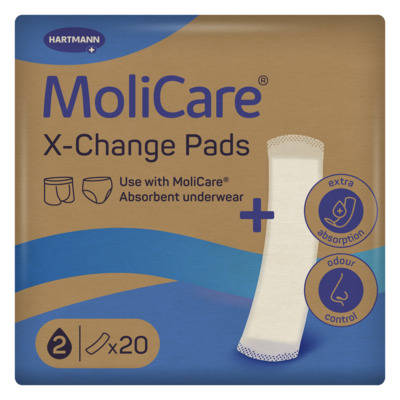 MoliCare® X-Change Pads
<h3><strong>Invisible underwear pads providing extra protection for MoliCare® Absorbent underwear</strong></h3>
<p>Enjoy that dry feeling for up to 12 hours* with MoliCare® X-Change Pads. <br />
Designed to add increased protection to MoliCare® Absorbent underwear, MoliCare® X-Change pads have a highly absorbent core that turns liquid into gel and neutralises unpleasant odours. The pad can hold up to 20 teaspoons (approx. 100 ml) of urine.<br />
Invisible due to the integrated pocket in MoliCare® Absorbent underwear, the pad stays in place and gives you the security of extra leakproof protection when you need it most. Just look for the extra layer of fabric inside the underwear and slip the pad into the pocket for increased absorbency and security against light bladder weakness. This unique concept is patented by HARTMANN.<br />
MoliCare® X-Change incontinence pads for underwear are easy to change and dispose of in public washrooms. Made to reduce disposable waste by 78 % compared to other incontinence products, they are free of silver chloride and other biocides that can have a negative impact on the intimate flora and environment.<br />
*Hours will vary depending on amount of urine and individual bladder habits.</p>
MoliCare® X-Change Pads
<h3><strong>Invisible underwear pads providing extra protection for MoliCare® Absorbent underwear</strong></h3>
<p>Enjoy that dry feeling for up to 12 hours* with MoliCare® X-Change Pads. <br />
Designed to add increased protection to MoliCare® Absorbent underwear, MoliCare® X-Change pads have a highly absorbent core that turns liquid into gel and neutralises unpleasant odours. The pad can hold up to 20 teaspoons (approx. 100 ml) of urine.<br />
Invisible due to the integrated pocket in MoliCare® Absorbent underwear, the pad stays in place and gives you the security of extra leakproof protection when you need it most. Just look for the extra layer of fabric inside the underwear and slip the pad into the pocket for increased absorbency and security against light bladder weakness. This unique concept is patented by HARTMANN.<br />
MoliCare® X-Change incontinence pads for underwear are easy to change and dispose of in public washrooms. Made to reduce disposable waste by 78 % compared to other incontinence products, they are free of silver chloride and other biocides that can have a negative impact on the intimate flora and environment.<br />
*Hours will vary depending on amount of urine and individual bladder habits.</p>
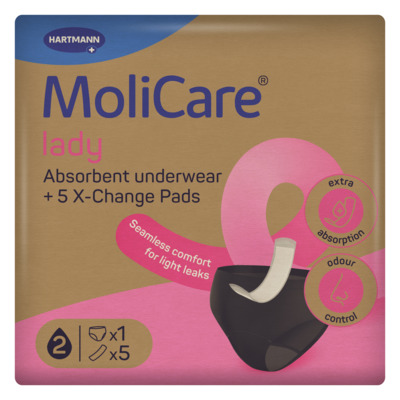 MoliCare® Lady Washable & Absorbent Underwear X-Change Pads
<h2>Why Choose MoliCare<sup>®</sup> washable bladder weakness underwear?</h2>
<p> </p>
<ul>
<li>Unique washable incontinence pants for ladies with a hidden pocket to insert MoliCare<sup>®</sup> X-Change Pads for extra protection</li>
<li>Versatile daily hygiene product for very light bladder weakness</li>
<li>In combination with the exchangeable X-Change Pads, these washable incontinence pants safely lock away up to 30 teaspoons (approx. 149 ml) of urine for a secure, dry feeling</li>
<li>Leakproof pant with a seamless and invisible design for maximum discretion</li>
<li>MoliCare<sup>®</sup> X-Change Pads provide reliable odour control and are easily inserted into the pants and changed as required</li>
<li>Hygienically wash the incontinence pants at 60°C, without the X-Change Pad</li>
<li>78% less plastic waste compared to conventional disposable incontinence products</li>
<li>Suitable for tumble drying</li>
<li>Free of silver chloride and other biocides that can negatively affect vaginal flora</li>
<li>Designed in Germany and made from soft, gentle-on-skin fabrics</li>
<li>This pack contains one pair of women's washable incontinence pants in Size M or Size L plus 5 X-Change-Pads</li>
<li>Designed in Germany and made from soft, gentle-on-skin fabrics</li>
<li>Medium size corresponds to EU size 40/42, or dress size 14-16</li>
</ul>
MoliCare® Lady Washable & Absorbent Underwear X-Change Pads
<h2>Why Choose MoliCare<sup>®</sup> washable bladder weakness underwear?</h2>
<p> </p>
<ul>
<li>Unique washable incontinence pants for ladies with a hidden pocket to insert MoliCare<sup>®</sup> X-Change Pads for extra protection</li>
<li>Versatile daily hygiene product for very light bladder weakness</li>
<li>In combination with the exchangeable X-Change Pads, these washable incontinence pants safely lock away up to 30 teaspoons (approx. 149 ml) of urine for a secure, dry feeling</li>
<li>Leakproof pant with a seamless and invisible design for maximum discretion</li>
<li>MoliCare<sup>®</sup> X-Change Pads provide reliable odour control and are easily inserted into the pants and changed as required</li>
<li>Hygienically wash the incontinence pants at 60°C, without the X-Change Pad</li>
<li>78% less plastic waste compared to conventional disposable incontinence products</li>
<li>Suitable for tumble drying</li>
<li>Free of silver chloride and other biocides that can negatively affect vaginal flora</li>
<li>Designed in Germany and made from soft, gentle-on-skin fabrics</li>
<li>This pack contains one pair of women's washable incontinence pants in Size M or Size L plus 5 X-Change-Pads</li>
<li>Designed in Germany and made from soft, gentle-on-skin fabrics</li>
<li>Medium size corresponds to EU size 40/42, or dress size 14-16</li>
</ul>
